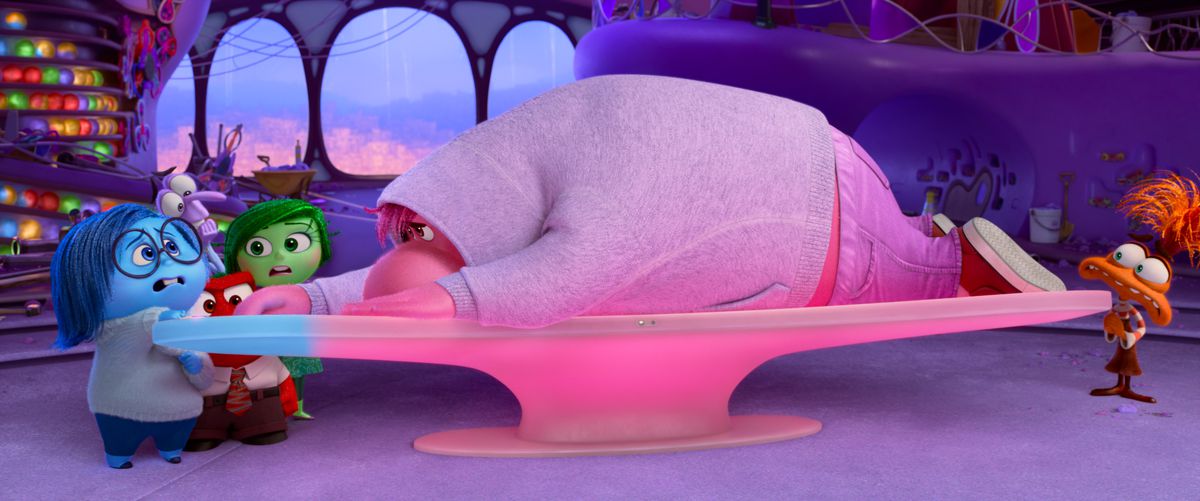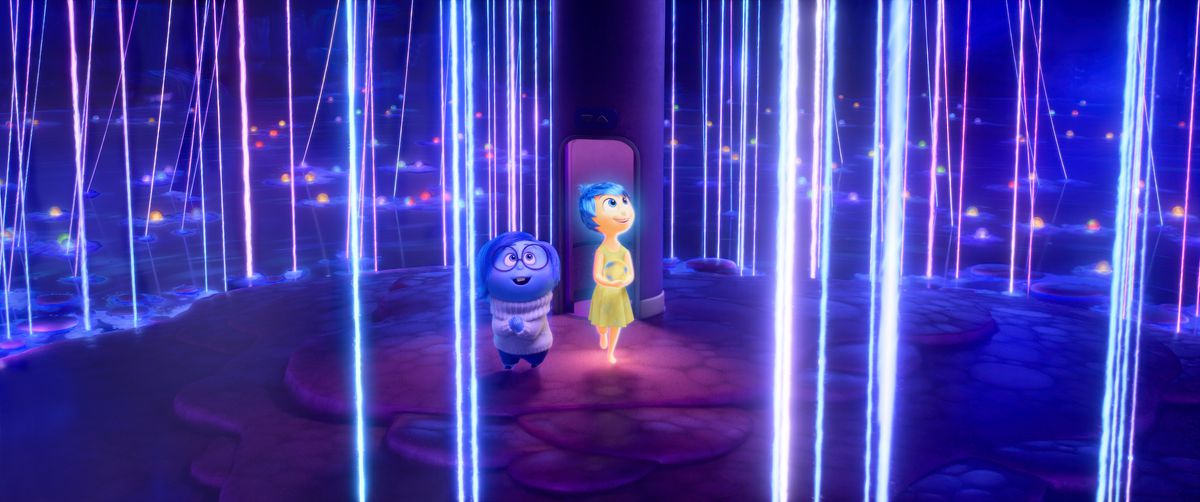One of Inside Out 2’s subplots hits harder than the central story
In the 2015 Pixar film Inside outThe ultimate message is that we all need emotional balance to experience life to the fullest — which means embracing some of our less pleasant emotions, like sadness and anger. That message plays out through five personified emotions that control the mind of an 11-year-old girl named Riley, who is going through some major changes in her life.
Kelsey Mann’s 2024 sequel Inside Out 2 continues the theme, but this time Riley is going through puberty, which brings on all sorts of new emotions in her. Inside Out 2 neatly reiterates the importance of emotional regulation — but there’s also a separate thread about a teenager growing stronger in her sense of self-worth and accepting that she won’t always be a completely good person. That’s a particularly intriguing plot point — especially considering how it plays out via a seeming character contradiction that’s never quite resolved. The whole thing could use more space and detail, but instead it takes a backseat to the plot about emotional balance.
(Editorial note: This post contains spoilers for Inside Out 2.)
Image: Disney/Pixar via Everett Collection
In the new film, Riley, now 13, is about to go to a prestigious hockey camp. Joy (Amy Poehler), Sadness (Phyllis Smith) and Riley’s other emotions think they have things under control, until a whole new set of emotions, led by Anxiety (Maya Hawke), enter the picture. Anxiety quickly takes over, convinced that her preparation and planning will make Riley successful in high school, and she pushes the other emotional characters to the back of Riley’s mind.
Eventually, after much conflict, Angst realizes that she needs to step back and make room for Joy and the others. While Angst is While it is useful in small doses, it should not be the sole driving force in one’s life – just as Joy realizes in the first Inside out that she can’t be in control of Riley’s emotional life all the time, and that Sadness needs to be allowed to let all of Riley’s tears flow freely.
As cathartic as that realization is, it clashes with another theme in the film that comes somewhat out of nowhere. And that would make a great parallel plot, if it weren’t such a rushed sidebar in the story.
Early in the film, Joy demonstrates a device she created that dumps bad memories into the back of Riley’s mental storage space. If they aren’t stored in short-term memory or integrated into Riley’s belief system, those memories can simply collect dust in an unused corner of Riley’s brain, never affecting her in any way.

Image: Disney/Pixar
Much of the first film was about Joy realizing that all memories are necessary for Riley’s life experience and growth, whether they’re happy, sad, angry, fearful, disgusted, or a combination of emotions. So the way she begins the sequel by bypassing Riley’s entire internal process and slinging “bad” memories to the back of her mind seems counterintuitive. But as Riley’s sense of self begins to solidify, perhaps Joy has regressed on her resolve to accept all of Riley’s experiences. After all, Riley’s sense of self, fueled by positive, helpful memories, proclaims that she is a good person. Perfect!
When Anxiety takes over, she warps Riley’s sense of self-worth into thinking she’s not good enough—not skilled enough at hockey to make her high school team, not slick enough to be friends with high school students, and not competent enough to live the rest of her life. Joy and the rest of the emotions eventually convince Anxiety to step down, and they restore the sense of self-worth Riley had built up before Anxiety started interfering. But at that moment, Joy also decides to embrace all of Riley’s unpleasant memories. She realizes that it’s important to make sure Riley is a complex person, not just a self-satisfied one.
It’s a compelling message — but it comes with so little buildup. Thematically, it’s similar to “We have to experience all emotions, good and bad.” But there’s an added layer beyond the healthy processing of feelings, one that’s supposed to touch on why it’s OK for Riley to understand that she hasn’t been a completely blameless person in everything she’s been through. And that concept is rarely questioned.

Image: Disney/Pixar
Before that pivotal moment, the driving plot is to keep Angst from completely taking over Riley’s brain. There’s no real room to explore how accepting your own flaws is an integral part of being human. It’s hinted at, since the big driver of Angst is the fear of Riley failing. But the whole idea isn’t fleshed out enough to make it work from Joy’s perspective. Why does she suddenly realize that acknowledging those bad memories is important? She’s spent so long constructing Riley’s previous “I’m a good person” sense of herself, but she abruptly decides to embrace all of the bad memories without any consideration, resistance, or debate.
Ultimately, as the “bad” memories are recovered and integrated, Riley becomes a much more self-aware and developed person, and Joy and the other emotions are able to appreciate her for all her layers, including her insecurities and flaws. They’ve always loved and supported their girl. That theme should resonate beautifully with the film’s primary thesis, especially since so much of growing up is learning about yourself and accepting your flaws. The whole idea is validating for adults, who may have already been through that journey and can now see it reflected on screen. And it’s a message that younger viewers can learn from as they slowly navigate their own sense of self.
But it’s also a huge, heavy idea that needed more time to build, rather than being an afterthought to a busy caper through the mind. Too bad, too, since the emotional balance plot was already the centerpiece of the first Inside outand the “flawed and conflicted doesn’t mean unlovable” plot feels more unique to the sequel. A little more emphasis on the importance of being a complex person rather than a good person would have made the sequel soar even more than it already does.
Inside Out 2 is now playing in theaters.
